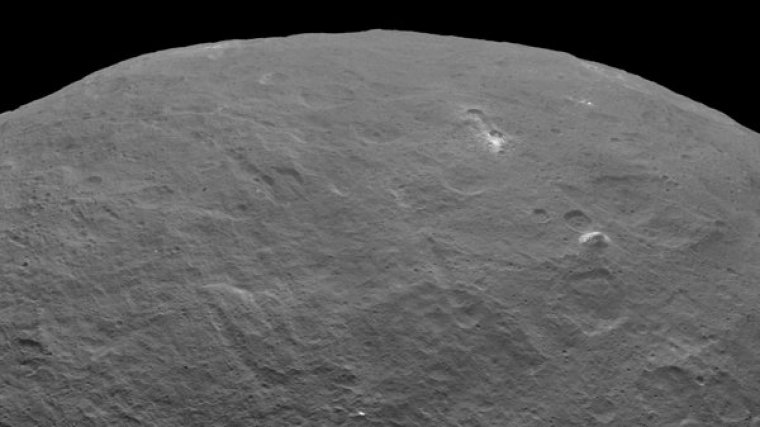| News / Science News |
Ceres Spots Continue to Mystify in Latest Dawn Images
NASA | JUNE 27, 2015
New images of Ceres from NASA's Dawn spacecraft provide more clues about its mysterious bright spots, and also reveal a pyramid-shaped peak towering over a relatively flat landscape.

NASA's Dawn spacecraft took this image, which includes an interesting mountain in the upper right. ![]()
Dawn has been studying the dwarf planet in detail from its second mapping orbit, which is 2,700 miles (4,400 kilometers) above Ceres. A new view of its intriguing bright spots, located in a crater about 55 miles (90 kilometers) across, shows even more small spots in the crater than were previously visible.
At least eight spots can be seen next to the largest bright area, which scientists think is approximately 6 miles (9 kilometers) wide. A highly reflective material is responsible for these spots -- ice and salt are leading possibilities, but scientists are considering other options, too.
In addition to the bright spots, the latest images also show a mountain with steep slopes protruding from a relatively smooth area of the dwarf planet's surface. The structure rises about 3 miles (5 kilometers) above the surface.
Ceres also has numerous craters of varying sizes, many of which have central peaks. There is ample evidence of past activity on the surface, including flows, landslides and collapsed structures.
YOU MAY ALSO LIKE



